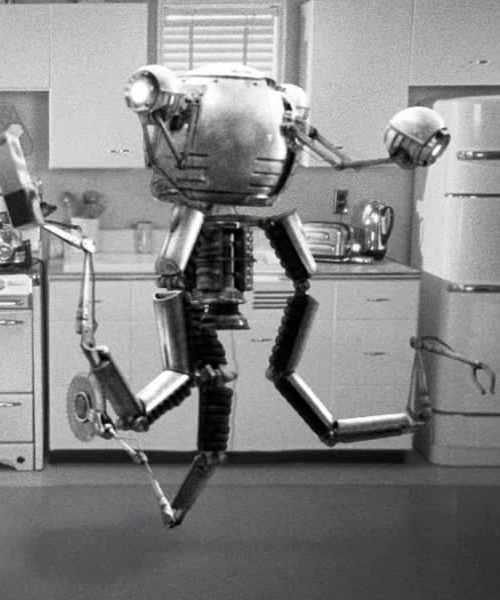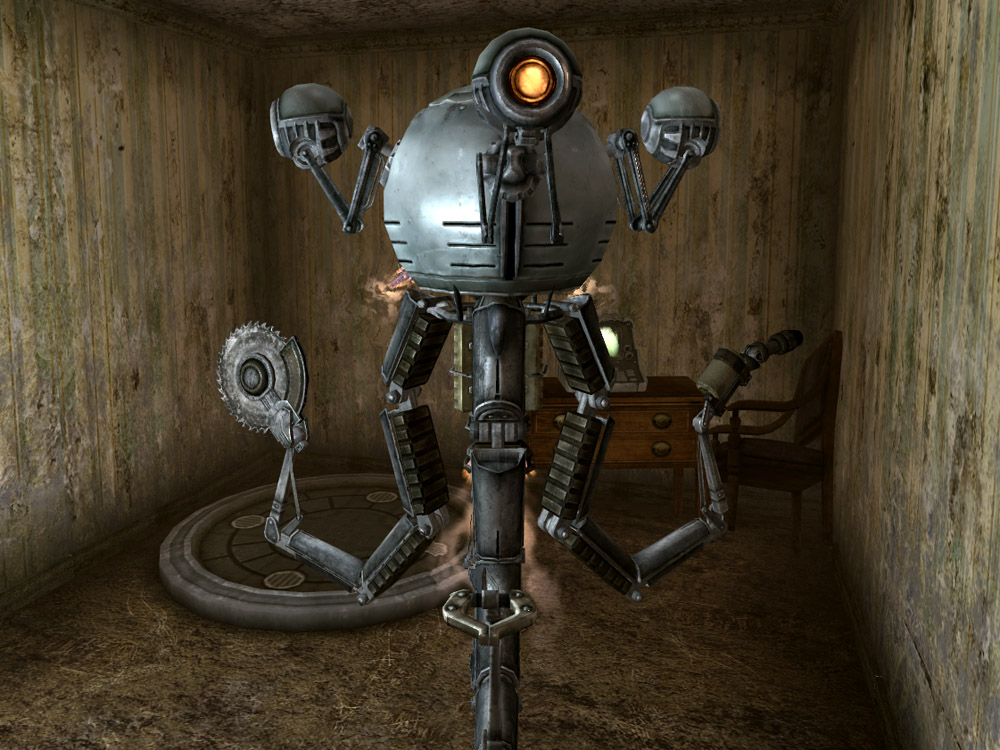

Each is actuated by motors contained within and contains nimble manipulators capable of tasks ranging from walking the dog to operating heavy weapons such as miniguns, flamers, and plasma casters.

Handy to use all of them in any configuration with a negligible loss of performance. Finally, each of the six arms mounted below the main body is strong enough to lift heavy loads, while retaining superior flexibility and coordination that allows the Mr. The two pods mounted on the sides of the main body each contain a 200 KW vectored-thrust ducted fan with ground-effect (GEV) skirts that allow the Mr. The fully rotating head mounted on top houses the single eye and sensors, together with a spotlight and basic communicator with a cheap voice synthesizer, short range radio, and communications jack.

The barrel-like main body contains the Calpower 238B nuclear power unit (200 KW output with two year endurance comparable to a truck engine) and eight rechargeable energy cells with a 270,000 KWS output, together with an integral mechanic toolset and the computer brain. Handy has a distinct, lumbering appearance with easily identifiable sub-assemblies. The original General Atomics International Mr. Models General Atomics International model
FALLOUT SHELTER MR HANDY UPGRADE
Sometime before the Great War, General Atomics International and RobCo wanted to upgrade their Mister Handy line by adding an additional hand alongside additional features. The success of this model resulted in the development of several additional models, including dedicated medical and military versions. Despite its sophistication, it was also cost-effective, making it the perfect domestic servant robot. The resulting model was a sleek, elegant design capable of self-programming and initiative, more than making up for halving the number of arms to just three. In order to maintain their market share, General Atomics entered into a joint venture with RobCo Industries, combining its talent with General Atomics' experience in robotics. By the 2070s, it was an automaton surrounded by more advanced designs utilizing cutting edge neural networks. Handy was, it was still a design rooted in the technology of the 2030s, with a compact computer brain that was incapable of learning or executing complex tasks without extensive programming. However, as rugged and reliable as the original Mr.

Each unit could carry out maintenance and repairs on other units (it could not carry it out on itself). Handy was designed to perform its nuclear fuel replacement and radiation cleansing. To minimize maintenance overhead, each Mr. The Calpower 238B nuclear power unit and self-maintenance modes were key to its success, ensuring each robot's longevity.
FALLOUT SHELTER MR HANDY UPDATE
So reliable that it only received one major hardware update in 2039, to eliminate a bug causing interference in the operation of the multiple arms. Used widely on both the American and Mexican markets (especially after the Mexico City earthquake of 2042), it was a rugged, reliable design. The first Mister Handy was introduced to the robotics market in 2037 by General Atomics International, as a general-purpose construction and maintenance unit.


 0 kommentar(er)
0 kommentar(er)
